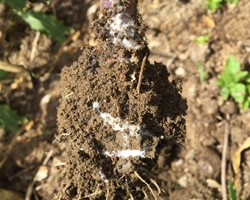White Rot Fact Sheet for Garlic
August 31, 2016

Learn more about white rot, the disease cycle, how to identify the disease, and control measures in a factsheet produced by Crystal Stewart, CCE Eastern NY Commercial Horticulture Program, and Frank Hay, Department of Integrated Plant Sciences, NYS Agricultural Experiment Station.
White Rot in Garlic Factsheet (pdf; 2251KB)

Upcoming Events
2026 Finger Lakes Produce Auction Winter Growers Meeting
January 8, 2026
Penn Yan, NY
At this vegetable grower-focused meeting, ag industry experts will discuss food safety, disease management in strawberries, the benefits of using cover crops, plus more. Two grower panel discussions will focus on pest management techniques and irrigation. DEC recertification credits offered in categories 10, 1a, 21, 22, 23, and 24.
2026 Ontario Produce Auction Winter Growers Meeting
January 14, 2026
Stanley, NY
At this grower-focused meeting, ag industry experts will discuss European Cherry Fruit Fly, greenhouse phytosanitary inspections, the benefits of using cover crops, plus more. Two grower panel discussions will focus on pest management techniques. DEC recertification credits offered in categories 10, 1a, 22, 23, and 24.


































